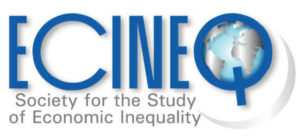On the relationship between objective and subjective inequality indices and the natural rate of subjective inequality
Working Paper 2012-248
Abstract
We establish the conditions under which a close functional relationship between objective and subjective inequality measures can be derived. These conditions are satisfied by many of the most important models for the distribution of income that have been proposed in the literature. We illustrate this result looking at the relationship between the Atkinson indices and the Gini coefficient for the lognormal, the Singh-Maddala, and the second kind beta distributions. While in the first case a positive functional relationship exists regardless of the level of inequality aversion, in the other two cases this relationship is observed when the inequality aversion parameter is smaller and greater than one, respectively. Importantly for the natural rate of subjective inequality (NRSI) hypothesis proposed by Lambert et al. (2003), the proportion of countries with aversion to inequality above the unity in the sample used by these authors is above 50 percent for almost every value of the NRSI considered in the analysis. Consequently, regression analysis aimed to evaluate the validity of this hypothesis could simply have identified the functional relationship between inequality measures, especially when the NRSI is set above 0.1.
Authors: Jose Maria Sarabia, Francisco Azpitarte .
